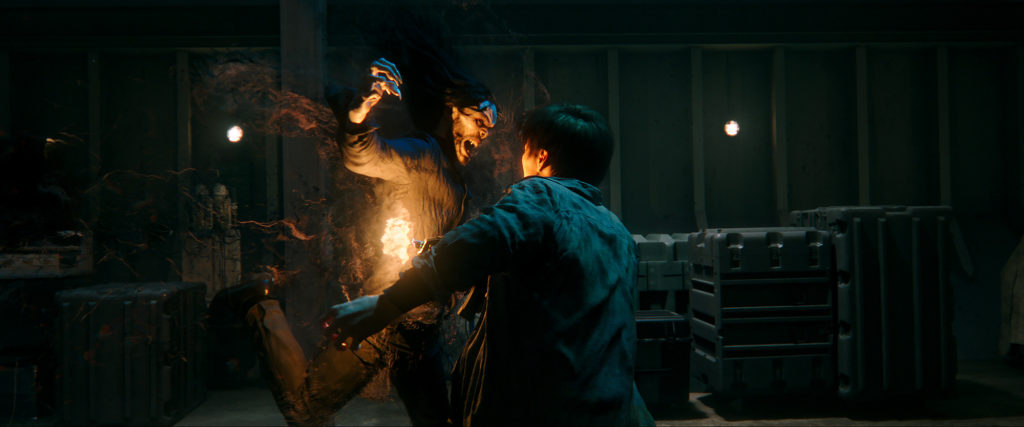
Morbius faceplants in Venom’s footsteps
Like anything else to have come out of the recent Sony standalone movies, Morbius was bad. It was not bad in a visually appealing and entertaining way like Venom, or in a “Look at this dumpster fire” kind of way that might cultivate a cult following like Tommy Wiseau’s The Room, but in a “Holy crap, I can not believe I wasted $13 and 90 minutes on this movie” way. While still being more faithful to the comics than many Marvel Cinematic Universe (MCU) iterations of Marvel characters, this movie still managed to be worthy of its April 1 release date.
Morbius was intended to be an addition to the Sony Spiderman Universe (SSU) (which was revealed to be a separate timeline/universe to the MCU in the End Credits) but may have actually worked to undo all the hard work of Venom and Venom: Let There Be Carnage in getting fans invested in the SSU.
Morbius stars Jared Leto as Dr. Michael Morbius, a man with a rare blood disease that leaves him disabled and requires the use of seemingly constant blood transfusions. As a child, Morbius meets a young boy, who he nicknames Milo (played by Matt Smith). After saving Milo’s life, Morbius suddenly gets very attached out of nowhere to the younger boy and gets sent off to a gifted school. The movie cuts forward 25 years, and Morbius has become obsessed with discovering a cure for his disease, and Milo, who as it turns out is rich, funds all his research studies. Both Milo and Morbius have become desperate, and are willing to go to extreme lengths to cure their disease. The movie follows the mishap that turns Morbius into a vampire, Milo’s betrayal that leads to him becoming a vampire, and the ethical struggle that Morbius and Milo have over the consumption of human blood.

Watching this movie, you can tell that Sony has tried to make lightning strike thrice. The action sequences and basic structure follows that of Venom (and pretty much any other cookie cutter superhero movie from the past decade), but lacks what made Venom enjoyable: a likable hero, some sort of stake in what is happening, action sequences where you can tell what is going on, humor, and some sort of competency at any point in the writing/acting/directing/editing process.
From watching Morbius, it is made clear that the only lessons Sony has learned thus far is that plot is unimportant in their movies. We have no reasoning for why Morbius has any semblance of a moral code, why he is not behaving as unhinged as Milo. We also do not know why he’s so attached to a character that we only see for 10 minutes before he becomes the main villain.
While Matt Smith struts around with the charisma of some villainous version of The Doctor, Leto spends the vast majority of his time with his powers sulking and having some kind of false moral dilemma about drinking human blood, despite it being abundantly clear that his position as a literal Hematologist provides him with ample opportunities to steal bagged blood for himself without harming innocent people. Jared Leto’s real life personality is about as unlikeable and uncharismatic as Morbius’, and the only real achievement he can claim from this film is that he’s managed to tank films in both Marvel and DC (as The Joker in Suicide Squad).

From the action sequences, it is not clear that Sony understood what made the action from The Amazing Spider-Man or Venom appealing to audiences. After becoming a vampire, Morbius spends most of his time in vampiric form surrounded by colored smoke. This visual effect would be a nice reminder as to why Jared Leto has a frankly obnoxious amount of facial prosthetics and CGI, if it was not for the fact that the majority of the action sequences are shot with such poor lighting that it becomes difficult to discern who is Morbius, and who is Milo. The effect has a sort of pinging sensation to it, which is supposed to remind us that Morbius and Milo have echolocation powers (or bat radar as they call it in the film), but instead, it reminds us of the $75 Million dollar budget that was apparently blown on this muddy wet mess of surprisingly bad CGI.
The film tries to thrill audiences with what would otherwise be incredible feats such as soaring through New York City and jumping from building to building, but a major problem with these scenes is that Morbius lacks any sort of stakes or powerscale to make them feel suspenseful. Prior to these scenes, Morbius has spent several minutes dodging literal bullets, smashing through buildings, and essentially showing he is impervious to damage. How is the audience supposed to feel the suspense of a 50 story drop when Morbius has clearly demonstrated that it would not affect him?

The pacing of the movie itself is not bad, but it feels as though it is because the audience frankly does not care about what is happening. Morbius completely fails to lean into the edginess of the vampire genre despite attempting what comes off as the amateurish attempt at edginess of a middle schooler. A much better example of this format would be New Line Cinema’s Blade which manages to capture the same basic ideas of Morbius, the ethical struggle over the consumption of human blood, a struggle on the idea of the human vs inhuman self, and the macabre nature of vampirism.
All in all the whole movie is a mess unlike Venom, which was an entertaining mess. Sony has clearly demonstrated that they lack the competency to create a Spider-Man Universe film without the adult supervision of Marvel Studios, and my hope as a Spider-Man fan is that Sony either hires competent writers and directors for the next few films, or that Sony decides to stop making more SSU films. With the film netting only 25 million in profit globally according to Forbes, it would not be a huge surprise if that latter ended up being the outcome.






